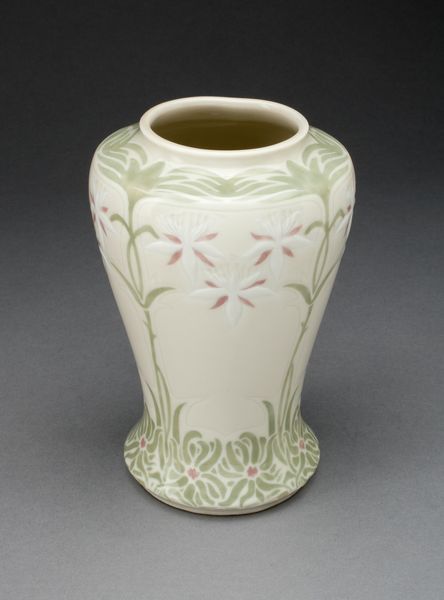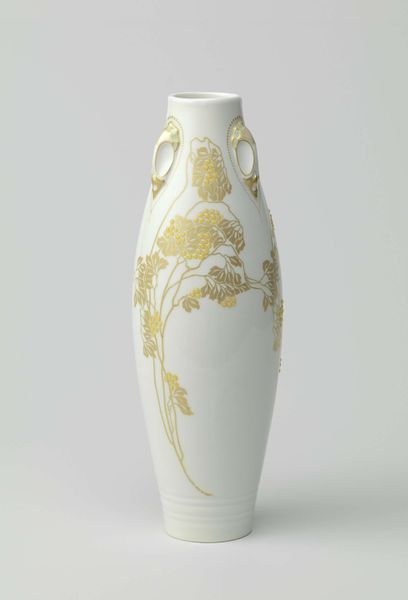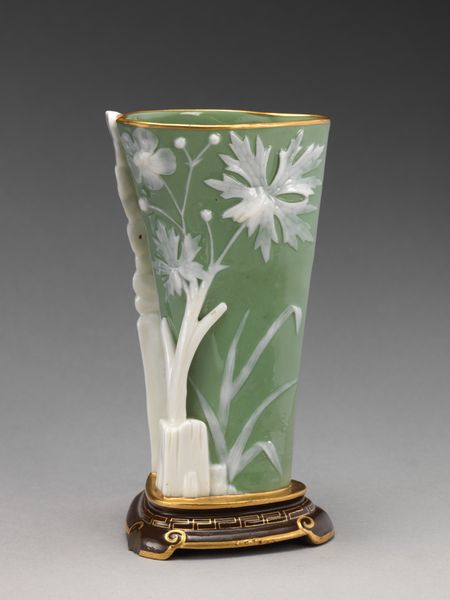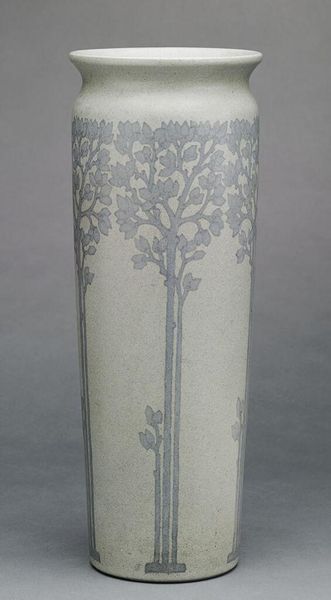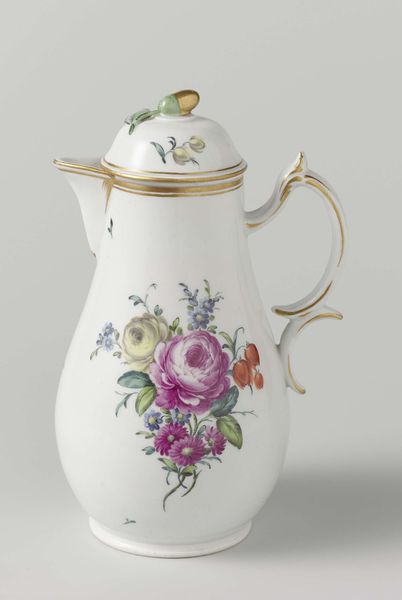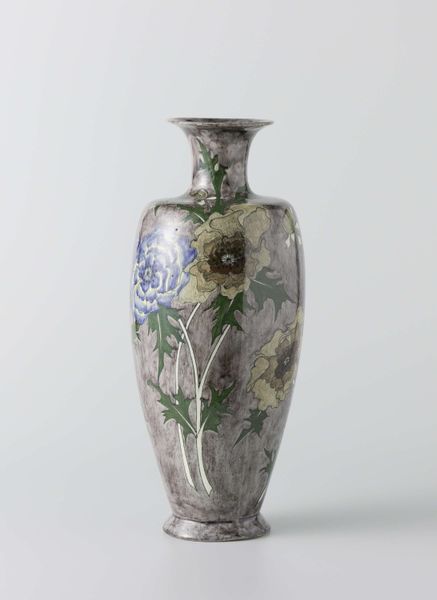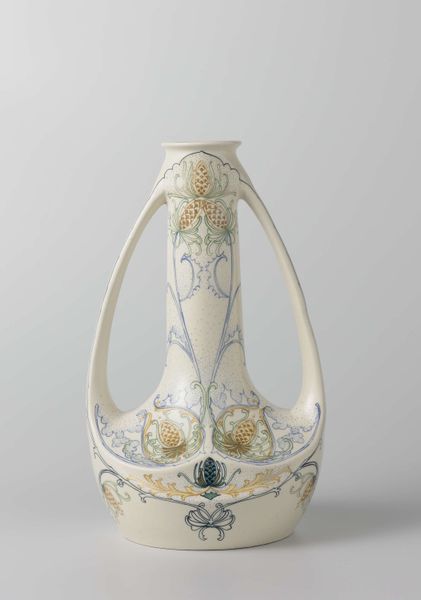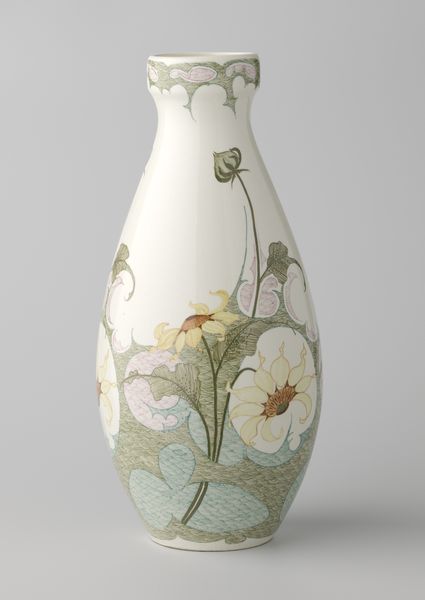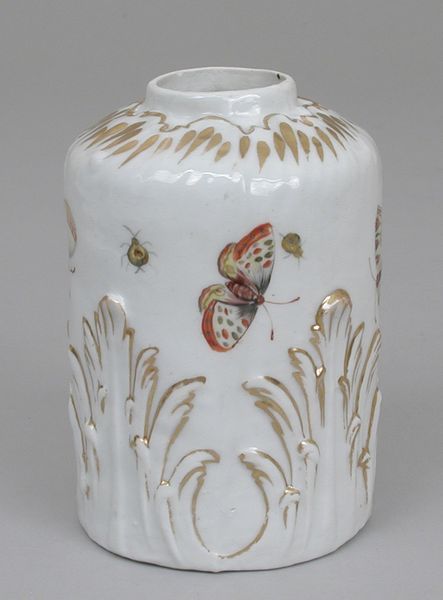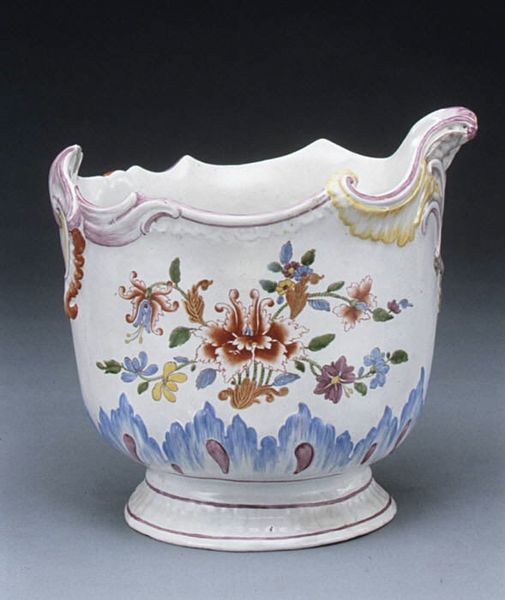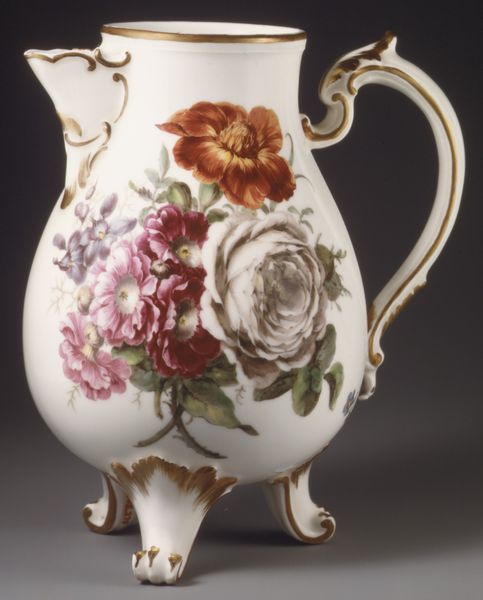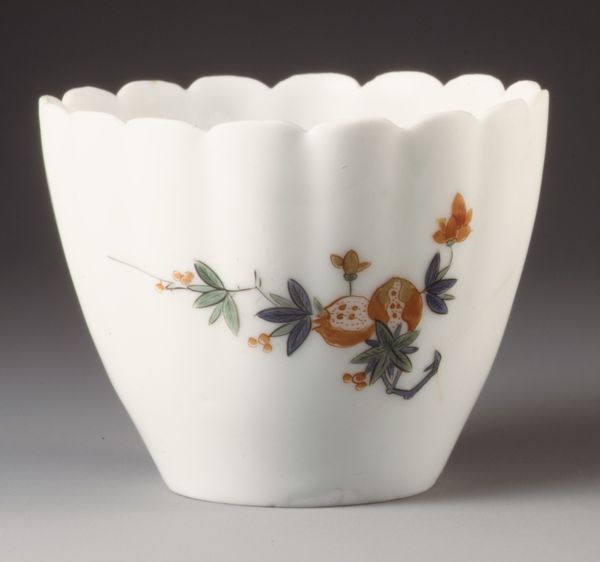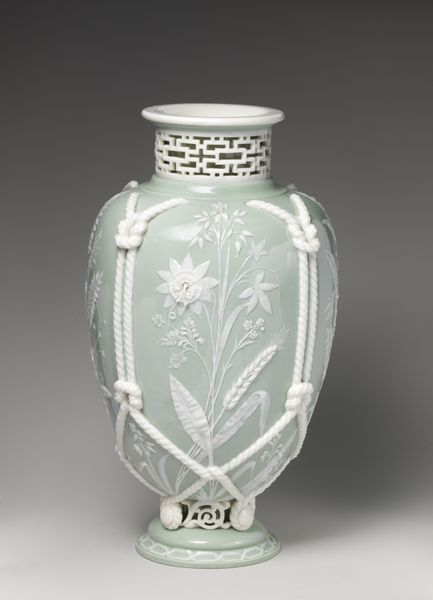
ceramic, porcelain
#
art-nouveau
#
ceramic
#
porcelain
#
geometric
#
decorative-art
Dimensions: 11 3/4 x 2 5/8 in. (29.8 x 6.7 cm) (at opening)
Copyright: No Known Copyright
Curator: What a stunning piece! This porcelain vase, designed by Edward Colonna around 1900 to 1902, embodies the Art Nouveau aesthetic. The organic, flowing lines and stylized floral motifs are quite characteristic of the period. Editor: My initial reaction is its remarkable elegance. The pale colour palette – primarily whites, soft greens and muted pinks – is so restrained and graceful, particularly set against the symmetry of the design. Curator: Colonna's dedication to material refinement is evident. Imagine the skill and labor involved in producing this flawlessly thin porcelain, achieving this pristine white surface, and then hand-painting those precise details. Art Nouveau pieces were often products of highly skilled workshops. Editor: Absolutely. And thinking about its place within decorative art collections highlights its original purpose. These objects weren’t just art for art's sake. They were integrated into domestic environments, reflecting evolving tastes and values in an era defined by significant societal changes, and in many instances they indicated affluence, displaying access to exquisite commodities. Curator: It challenges traditional hierarchies. Was Colonna designing “art” or an elaborate vessel for holding flowers? The intentional blurring of art and function was a key tenet of Art Nouveau and of the Arts and Crafts movement, with which it intersects. The emphasis shifts towards considering design in its material reality and utility. Editor: The motifs feel so emblematic. That stylized floral pattern – perhaps a tulip or a lily, given the elongated buds – almost stands as a visual signifier for the Art Nouveau era itself. And this reflects the rising public enthusiasm for aesthetics. Pieces such as these provided people an insight into a refined aesthetic, even within an everyday context. Curator: Looking closely, you can see that it would have been really a technically complex object to manufacture. The shaping of the body, its unusual extended handles...it is technically difficult, pointing towards the investment and technical skill embedded within its production. Editor: So true. Standing here considering this vase, I now have such a greater insight into what such a relatively humble object communicated to a very different social structure. Curator: Agreed. Examining the vase closely and considering its materiality and craft expands how we approach and appreciate its elegance. Editor: Yes, moving beyond the surface aesthetics encourages me to imagine this piece, situated within the spaces of which it once inhabited.
Comments
No comments
Be the first to comment and join the conversation on the ultimate creative platform.
